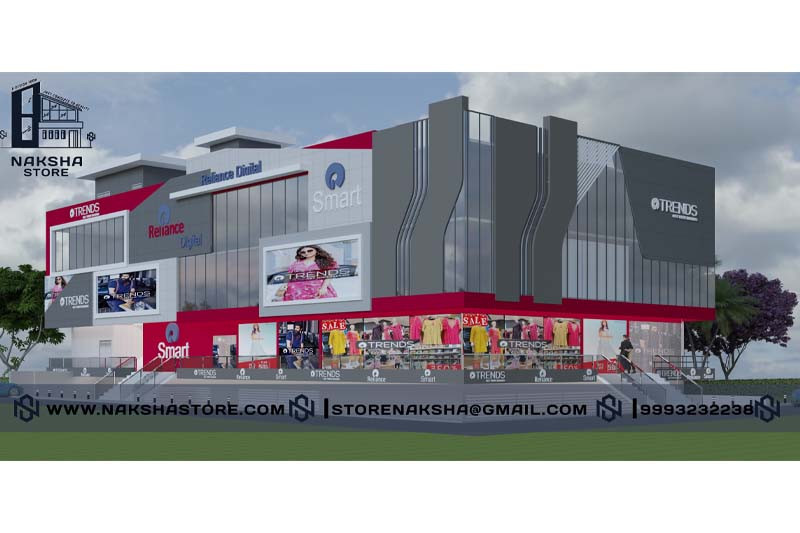
Designing an exterior commercial elevation involves creating a visually appealing and functional facade that reflects the identity and purpose of the commercial building. Here are some key considerations for designing a commercial elevation:
Architecture Style: Determine the architectural style that aligns with the purpose of the commercial building and the surrounding environment. Whether it's modern, contemporary, traditional, or a specific theme, choose a style that suits the business and the target audience.
Façade Materials: Select materials that are durable, weather-resistant, and visually appealing. Common options include brick, stone, glass, metal panels, stucco, or a combination of these. Consider incorporating textures and finishes that add depth and visual interest to the facade.
Entrances and Windows: Design eye-catching entrances that are easily identifiable and accessible. Incorporate large display windows to showcase products or services. Consider using glass or glazed elements to provide transparency and visibility into the interior, attracting potential customers.
Signage and Branding: Integrate signage that effectively communicates the business's identity and enhances visibility. Design clear and well-placed signage that is in harmony with the overall aesthetic of the building. Incorporate branding elements such as logos, colors, and typography to reinforce brand recognition.
Lighting: Implement appropriate lighting to highlight architectural features, signage, and create a welcoming ambiance. Consider using accent lighting to illuminate key areas and façade elements. Incorporate energy-efficient lighting solutions to reduce environmental impact and operating costs.
Awning and Canopies: Incorporate awnings or canopies to provide shade, protection from the elements, and add architectural interest. Select materials and designs that complement the overall aesthetic and brand identity.
Landscaping and Outdoor Spaces: Enhance the commercial elevation with well-designed landscaping and outdoor spaces. Incorporate greenery, planters, seating areas, or outdoor patios that can attract customers and provide a pleasant experience.
Scale and Proportions: Ensure the scale and proportions of the building are visually pleasing and appropriate for the surrounding context. Consider the relationship of the commercial building to neighboring structures and the overall streetscape.
Sustainability: Integrate sustainable design features, such as green roofs, solar panels, or rainwater harvesting systems, to reduce the environmental impact and demonstrate a commitment to sustainability. This can enhance the building's appeal to environmentally-conscious customers and stakeholders.
Remember, it's important to consider the specific requirements and regulations of your local area when designing a commercial elevation. Consulting with architects, designers, and local authorities will help ensure compliance with building codes and zoning restrictions while creating an attractive and functional commercial facade
Owner:Classified
Category: Architecture , Exterior Design
Address:India